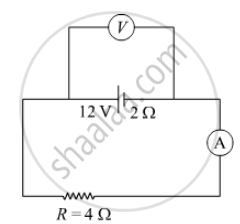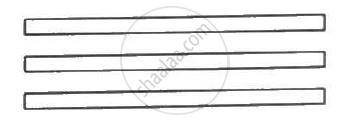Advertisements
Advertisements
Question
Is there any restriction on the upper limit of the high voltage set up in Van de Graff generator machine? Explain.
Solution
The main limiting factor on the value of high potential is the radii of sphere.
If the electric field just outside the sphere is sufficient for dielectric breakdown of air, no more charge can be transferred to it.
For a conducting sphere,
Electric field just outside sphere
`E = Q/(4pi in_0R^2)`
and electric potential
`V = Q/(4piin_0R)`
Thus, E = VR
Now, for E = 3 × 106 V/m (dielectric breakdown)
Radius of should be 1 m.
Thus, the maximum potential of a sphere of radius 1 m would be 3 × 106V.
APPEARS IN
RELATED QUESTIONS
Define 1 volt PD.
Draw a labelled diagram of Van de Graaff generator. State its working principle to show how by introducing a small charged sphere into a larger sphere, a large amount of charge can be transferred to the outer sphere. State the use of this machine and also point out its limitations.
In the figure shown, an ammeter A and a resistor of 4 Ω are connected to the terminals of the source. The emf of the source is 12 V having an internal resistance of 2 Ω. Calculate the voltmeter and ammeter readings.

Draw a schematic diagram and explain the working of Van de Graff generator device.
A 100 pF capacitor is charged to a potential difference of 24 V. It is connected to an uncharged capacitor of capacitance 20 pF. What will be the new potential difference across the 100 pF capacitor?
The capacitance between the adjacent plates shown in the figure is 50 nF. A charge of 1.0µC is placed on the middle plate. If 1.0 µC is placed on the upper plate instead of the middle, what will be the potential difference between (a) the upper and the middle plates and (b) the middle and the lower plates?

An α-particle and a proton are accelerate at same potential difference from rest. What will be the ratio of their final velocity?
On moving a charge of 20 C by 2 cm, 2 j of work is done then the potential difference between the point is:-
A bullet of mass of 2 g is having a charge of 2 µc. Through what potential difference must it be accelerated, starting from rest, to acquire a speed of 10 m/s.
Work done in moving a unit positive charge through a distance of x meter on an equipotential surface is:-
